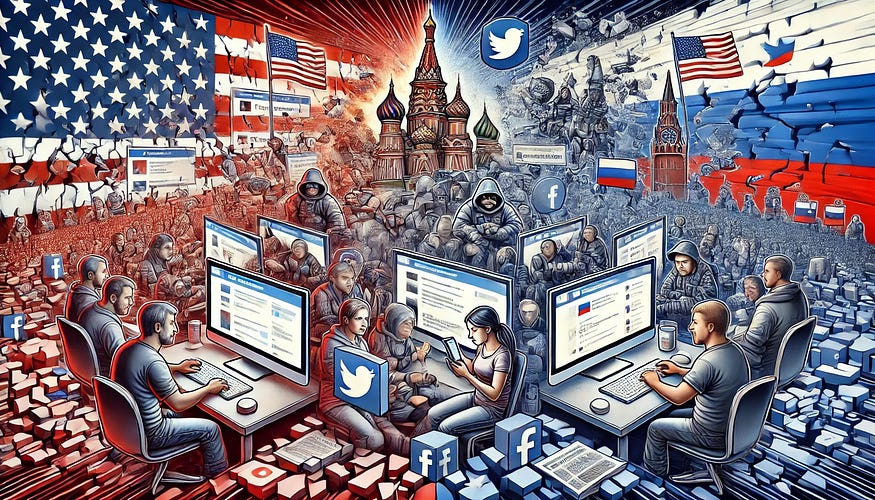Did Russia’s Disinformation Campaign Succeed in Dividing American Social Media Users?
Analyzing the Impact of Russian Tactics on Political Polarization and Public Perception in the United States.

Chris Bail, a sociologist and author known for his work on social media and political polarization, has discussed the complexities of Russia’s disinformation campaign and its impact on American social media users. To determine if Russia’s campaign to divide American social media users succeeded, we need to consider several key aspects:
Extent of Russian Influence
Tactics and Reach
Disinformation Tactics: Russia employed a variety of tactics, including creating fake accounts, spreading divisive content, and amplifying existing social tensions. These tactics were designed to exploit and exacerbate political and social divisions within the United States.
Targeting: Russian operatives strategically targeted different demographic groups with tailored messages to maximize impact. This included using highly emotional and polarizing content to provoke strong reactions and increase engagement.
Volume and Engagement
Low Volume, High Impact: While Russian ads and posts accounted for a small percentage of overall social media content, their strategic targeting and emotionally charged nature likely had a disproportionate effect. The content often went viral, reaching a much larger audience than the original posts.
Engagement Metrics: Studies have shown that Russian disinformation content received significant engagement in the form of likes, shares, and comments, indicating that it successfully captured the attention of American social media users.
Impact on American Society
Polarization and Division
Political Polarization: There is evidence that Russian disinformation campaigns contributed to increased political polarization in the U.S. by promoting extreme viewpoints and fostering distrust between different political groups. This exacerbated existing divisions and made constructive dialogue more difficult.
Social Divisions: Beyond politics, the campaigns also targeted social issues such as race, immigration, and gun control, further deepening societal divides. This not only affected public discourse but also contributed to a more fragmented social landscape.
Influence on Public Perception
Trust in Media and Institutions: Russian disinformation efforts aimed to undermine trust in mainstream media and democratic institutions. By spreading false information and conspiracy theories, these campaigns sought to create confusion and erode confidence in the electoral process and governmental integrity.
Perception of Reality: The repeated exposure to disinformation and polarizing content has likely altered the perception of reality for many social media users, making it harder to distinguish between credible information and false narratives.
Analysis and Insights from Chris Bail
Chris Bail’s research emphasizes the role of social media in amplifying polarizing content and the psychological mechanisms that drive engagement with such material. He highlights several key insights:
Echo Chambers: Social media algorithms tend to create echo chambers where users are primarily exposed to content that aligns with their existing beliefs. This reinforces biases and makes individuals more susceptible to disinformation.
Misinformation Spread: Bail points out that emotionally charged content, regardless of its veracity, is more likely to be shared and engaged with. This dynamic plays into the hands of disinformation campaigns, which rely on virality to spread their messages.
Role of Moderation: Effective moderation and fact-checking are crucial in combating disinformation. However, the sheer volume of content and the sophisticated tactics used by disinformation agents make this a challenging task.
Conclusion
While it is difficult to quantify the exact extent of success, there is substantial evidence that Russia’s campaign to divide American social media users had a significant impact. It contributed to increased political and social polarization, undermined trust in institutions, and altered public perception. Chris Bail’s work sheds light on the mechanisms that facilitated this influence, emphasizing the need for improved media literacy, better platform policies, and more effective countermeasures to address the ongoing challenges posed by disinformation campaigns.

